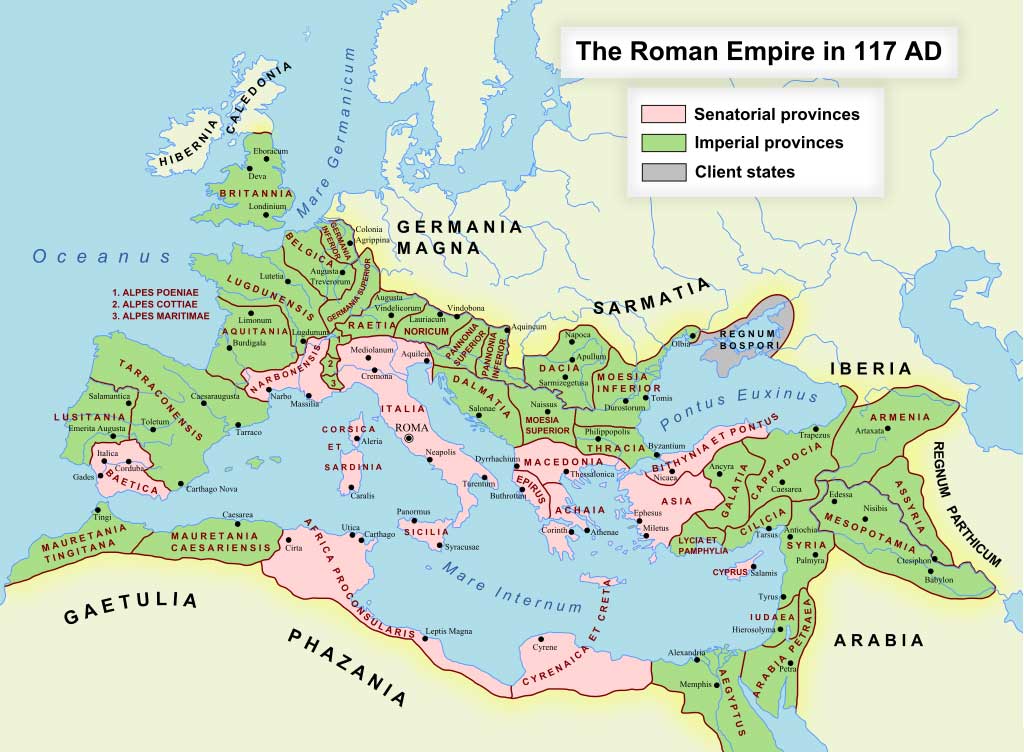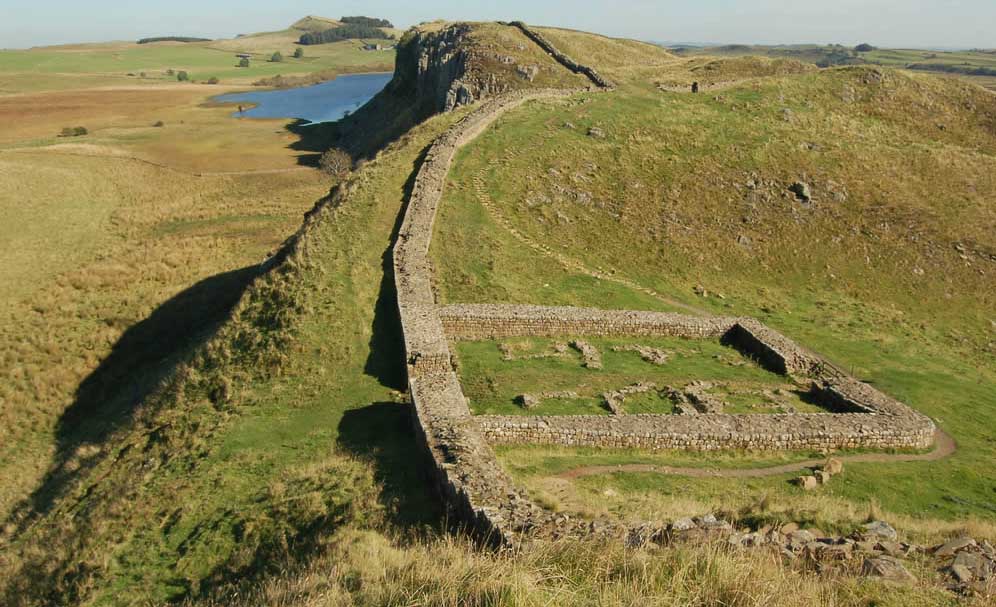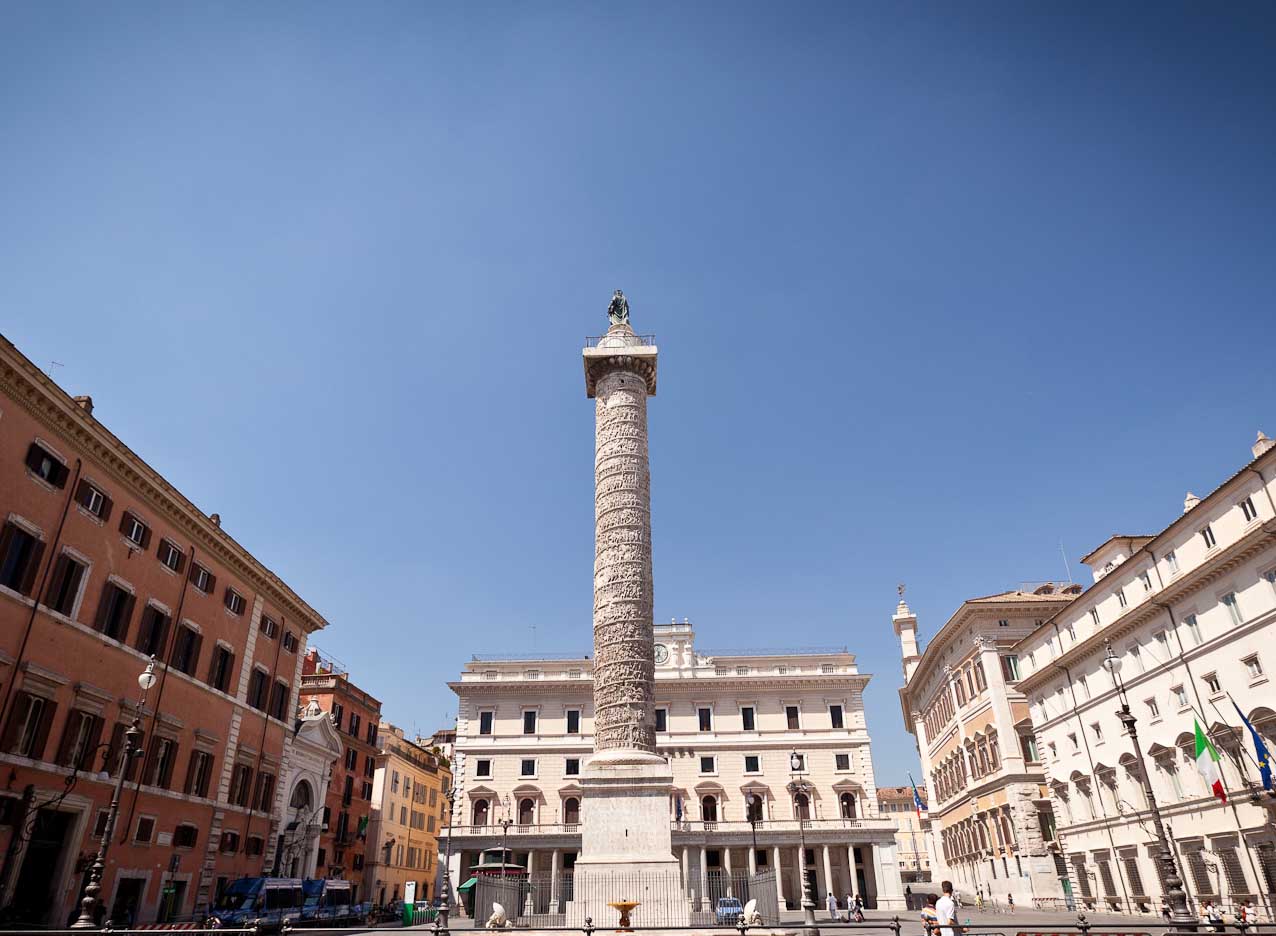As the Roman Senate organized the murder of Domitian, it also took the lead role in the selection of the new ruler. The Senate decided to set old, peaceful senator Nerva Caesar Augustus (96-98 AD) as the Roman Emperor. Nerva became Emperor at the age of sixty-five. Nerva’s policies increased his popularity. All properties which had been confiscated by Domitian were returned to their respective families. To the poorest, Nerva granted allotments of land worth up to 60 million sesterces.
He proved to be very prudent ruler. He immediately adopted Trajan which was set to be his successor. Such a system of adoption, in which the ruler would appoint some quality man, adopt him, and ordained him to succeed the throne, stayed almost an entire century. That is why this period is known as the “period of five good Emperors”. Generally the period of “five good Emperors” was a period of the Roman Empire greatest power, which in 116 AD reached its maximum.
As Emperor Trajan (98-117 AD) led his troops down the valley of the Tigris and Euphrates and he reached to the Persian Gulf. He turned the area known as “the cradle of civilization” into two new provinces – Assyria and Mesopotamia. Trajan became best known for his campaign against Dacia (approximately today’s Romania) which was rich in gold, after which he was able to organize the longest gladiator games in Roman history that lasted 123 days and it involved about 10.000 gladiators and 11.000 wild beasts. In order to commemorate the victory over the Dacians and other tribes across the Danube, he erected so- called Trajan’s Column in the Roman Forum where scenes from these conflicts were drawn.



Trajan’s successor Hadrian or Publius Aelius Hadrianus Augustus (117-138 AD) continued with the firm reign, and he founded an informal council that helped him to rule, so-called “friends of the Emperor” (amici). This council included leading experts of that time in Roman law, and therefore he did a procedure in order to standardize civil Law, which meant enumeration of all legal articles issued over the centuries by the Roman authorities. It was only later that the Byzantine Emperor Justinian undertook such a great job. Hadrian was known for construction in the provinces, and probably he was best known for building the so-called “Hadrian’s Wall” across Britain, as a protection against the Celts. He was known for building an entire city on the Nile, in honour of his deceased lover Antinous – Antinopolis.
Hadrian did one move that will have far-reaching consequences in the future of the Empire. He allowed provincial population and barbarian nations to join the Roman army, because he needed soldiers in order to guard borders. He was an adept in astrology, like many intelligent Romans of the time. He was also an aesthete who ascended Mount Etna, in Sicily, and Jabal Agraʿ, near Syrian Antioch. Hadrian was fascinated for Greek learning and sophistication. Hadrian was free to choose sexual partners of either gender. He has been a brilliant administrator and Roman empire during his reign entered into a period of stability and relative peace for 20 years.



Hadrian was succeeded by Antoninus Pius (138-161 AD), according to which the whole dynasty got its name. This was the time of a complete peace in the Roman Empire. His economic policy in general was relatively conservative and avoided luxurious waste while supporting public works of practical application. Antoninus completed the Mausoleum of Hadrian along the Tiber and built the temples of the Divine Hadrian in the Campus Martius and of Faustina in the Forum. He also restored the oldest bridge in Rome, the Pons Sublicius, the Graecostadium, and the Colosseum.
Marcus Aurelius (161-180 AD), which very often was forced to struggle with a variety of barbarian tribes on the Roman Limes Danube and Rhine. One of its military operations was particularly unfortunate, because his army when returned from Asia Minor brought the plague which caused devastating consequences over entire empire. Marcus Aurelius also died from the plague in Vindabona (Vienna).



During his reign there was violence against Christians in 167, and perhaps the worst stain on Marcus’ principate stemmed from the pogrom of Christians in Lugdunum in southern France in 177 AD. One of the best known monument that Marcus ordered to build during his reign was the column, which rises from Piazza Colonna in Rome. Column represent Marcus triumph against the Marcomanni and Sarmati in the years 172-75. Marcus Aurelius wrote the 12 books of the Meditations (Stoic philosophy). The biggest mistake he made toward the end of his life – even though he was an educated man who wore the nickname “Emperor-philosopher,” a follower of Stoic philosophy he did not continued the tradition of adopting a quality person as his successor, but he was succeeded by his “useless” son – Commodus (180-192 AD).
Marcus Aurelius believed that his son can become better. Commodus reign was one of the most extravagant and most vicious in the history of Rome. Commodus was lapsing into insanity. He gave Rome a new name, Colonia Commodiana (Colony of Commodus), and imagined that he was the god Hercules, entering the arena to fight as a gladiator or to kill lions with bow and arrow. Therefore with him ended a period of good Emperors and stability, and again began period of the crisis for the Roman Empire.
